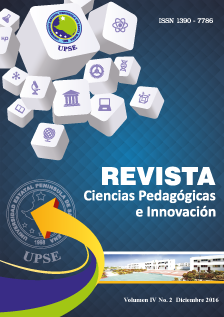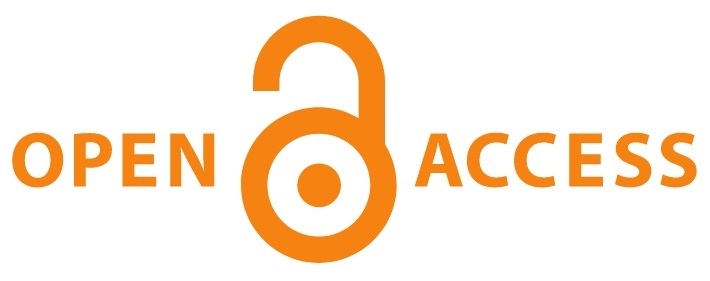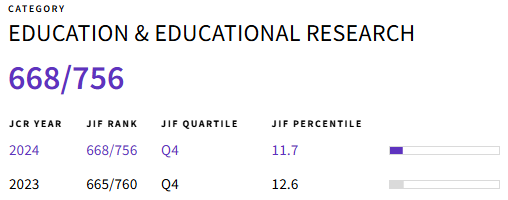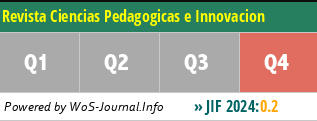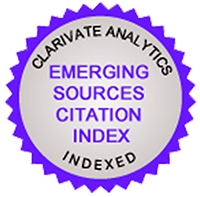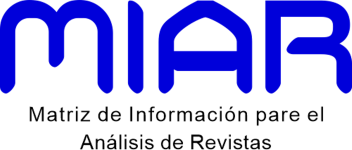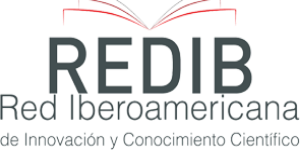Critical thinking at graduate level: a model proposal to be integrated to the educational process
DOI:
https://doi.org/10.26423/rcpi.v4i2.135Keywords:
Critical thinking, Higher Education, EducationAbstract
This research analyzes the most important concepts of critical thinking as well as their importance and usefulness for the educational processes at graduate level. A detailed analysis of the most widely accepted concepts and factors involved in the development and application of this kind of thinking has been made. Finally, a model that includes the concepts and analyzed factors and their interrelations is proposed; the ultimate goal is to provide teachers and directors of Institutions in Higher Education, a tool that enables the inclusion of this type of thinking in their teaching and learning processes with the ultimate intention of improving the quality of the training processes.
Downloads
References
Afshar, H. S., & Rahimi, M. (2014). The Relationship among Critical Thinking, Emotional Intelligence, and Speaking Abilities of Iranian EFL Learners.Procedia-Social and Behavioral Sciences, 136, 75-79.
Anderson, L. W., & Krathwohl, D. R. (2001). A taxonomy for learning teaching and assessing: A revision of Bloom’s taxonomy of educational objectives. New York:Addison-Wesley.
Bailin, Case, Coombs, & Daniels (1999b). Conceptualizing critical thinking. Journal of Curriculum Studies, 31(3), 285-302.
Baddeley, A. D. (2002). Is working memory still working?. European Psychologist, 7, 85–97.
Bloom, B. S. (1956). Taxonomy of educational objectives: The classification of educational goals. In Handbook 1: Cognitiv,e domain. New York: McKay
D’Alessio, F. (2010). Liderazgo y atributos gerenciales: Una visión global y estratégica. México D.F., México: Pearson
Dwyer, C., Hogan, M., & Stewart, I. 2014. An integrated critical thinking framework for the 21stcentury. Thinking Skills and Creativity, 12, 43-52.
Elder, L. & Paul. R. (1999). Critical thinking: Teaching students to seek the logic of things. Journal of developmental education, 23(1), 34-35
Krathwohl, D. R. (2002). A revision of Bloom’s taxonomy: An overview. Theory Into Practice, 41(4), 212–218.
Livingston, J. A. (1997). Metacognition: An Overview. http://www.gse.buffalo.edu/fas/shuell/CEP564/Metacog.htm, Eriúim Tarihi: 24.06.2009 Mertes, L. (1991). Thinking and Writing. Middle School Journal, 22, 24-25.
Natale, S., & Ricci, F. (2006),"Critical thinking in organizations", Team Performance Management: An International Journal 12, 7/8, 272 - 277
Paul, R., & Elder, L. 2001. The Miniature Guide to Critical Thinking Concepts & Tools, 2001. Tomado de: http://books.google.com.ec/ books?hl=es&lr=&id=lrdOjmb22HkC&oi=fnd&pg=PA4&dq=Thinking+concepts&ots=cjTv30BwxG&sig=vuSnDy8ByuHuQyxgYx-oLxhwMCQ#v=onepage&q=Thinking%20concepts&f=false
Paul, R., & Elder, L. 2007. Critical Thinking competency Standards. Foundation of Xritical Thinking Press. http://www.criticalthinking.org/files/SAM_Comp%20Stand_07opt.pdf
Petress, K. (1984), “Critical thinking: an extended definition”, Education, 124(3), 461-465.
Piawa, C., Y., 2010. Building a test to assess creative and critical thinking simultaneously. Procedia Social and Behavioral Sciences,2, 551–559
Romiszowski, A. J. (1981). Designing instructional systems. New York: Nichols.
Oguz, A., Sahin, I., 2011. Literature Review on Metacognition and its Measurement. Procedia Social and Behavioural Sciences, 15, 3731–3736
Swanson, H. L. (1990). Influence of Metacognitive Knowledge and Aptitude on Problem Solving. Journal of Educational Psychology, 82(2), 306- 667.
Valenzuela, J., Nieto, A., Saiz, C. 2011. Critical Thinking Motivational Scale: a contribution to the study of relationship between critical thinking and motivation. Electronic Journal of Research in Educational Psychology, 9(2), 823-848.
Wilson, J. (1998). Assessing Metacognition: Legitimizing Metacognition as a Teaching Goal. Reflect, 4(1), 14-20
Downloads
Published
Issue
Section
License
El titular de los derechos de autor de la obra, otorga derechos de uso a los lectores mediante la licencia Creative Commons Atribución-NoComercial-CompartirIgual 4.0 Internacional. Esto permite el acceso gratuito inmediato a la obra y permite a cualquier usuario leer, descargar, copiar, distribuir, imprimir, buscar o vincular a los textos completos de los artículos, rastrearlos para su indexación, pasarlos como datos al software o usarlos para cualquier otro propósito legal.
Cuando la obra es aprobada y aceptada para su publicación, los autores conservan los derechos de autor sin restricciones, cediendo únicamente los derechos de reproducción, distribución para su explotación en formato de papel, así como en cualquier otro soporte magnético, óptico y digital.

